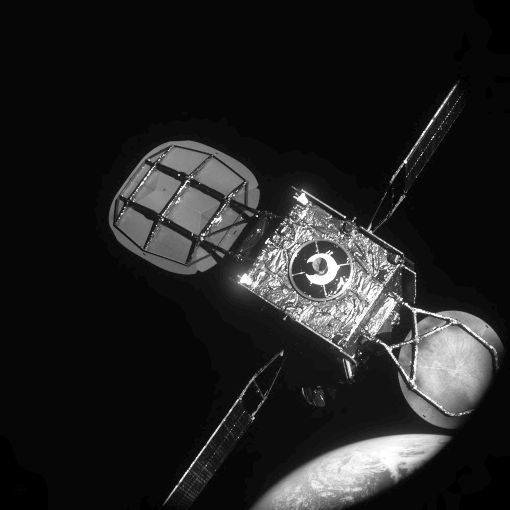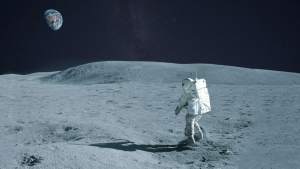Satellite Repair in Space Comes of Age
5th Aug 2022
In mid-2022, more than 5,000 satellites were operating in orbit, and their number continues to grow. The useful life of satellites currently in orbit is between 5 and 15 years, but sometimes, like any piece of technology, they can break down. Premature satellite failure means losing expensive equipment and adding to the already pressing problem of increasing amounts of space debris, which we examined previously. Space agencies and private companies are working constantly at reducing the cost of putting spacecraft into orbit, but satellite repair and refuelling seem to be more sustainable solutions. Let’s look at satellite maintenance methods and what innovative startups are working with them.
Do satellites require maintenance?
Yes, and it is a common practice. Maintenance determines whether a satellite will see out its expected lifespan or leave orbit earlier. Satellites are kept in orbit by the Earth’s gravity, but under the influence of various forces, devices can deviate from their given paths, and this calls for an orbit correction. To make these corrections, each satellite is equipped with thrusters.
What are the problems with maintaining satellites?
Until recently, orbit correction was the only means of satellite maintenance, but it was not always sufficient. Refuelling and repair would solve the problem completely, but for this, the satellite must either be captured or docked with. And the problem with most satellites is that they simply don’t have docking stations.
What happens to broken or spent spacecraft? In the best-case scenario, they are transferred to a burial orbit or de-orbited, where they burn up in the Earth’s atmosphere. In the worst case, they remain drifting dead weight, posing a threat to operational spacecraft.
What causes satellites to fail?
Satellites fail for a variety of reasons. First, the satellite’s attitude thrusters require fuel, and if the satellite performs multiple manoeuvres to correct its orbit, this fuel can run out very quickly. After spending its fuel, the satellite simply runs adrift, as it can no longer turn on the engines and perform manoeuvres.
What else causes satellites to fail? Other reasons include geomagnetic anomalies, radiation, and cosmic dust, which can damage the satellite’s skin and disable its instruments and electronics. Also, internal failures of the satellite’s critical components and collision with another object cannot be ruled out.
For example, in 2009, the US communications satellite Iridium 33 was destroyed as the result of a collision with the spent Russian communications satellite Kosmos-2251. This was the first time two satellites had collided in the history of astronautics. The impact created over 600 fragments of various sizes, and these fragments still pose a threat to other objects. In 2012, ISS astronauts had to perform a manoeuvre to avoid collision with a large piece of Iridium-33 debris. The debris passed twice at distances of 1-24 km from ISS.
Can satellites be repaired?
Until the mid-80s, the technologies at our disposal made refuelling or repairing satellites impossible. One solution emerged with the advent of NASA’s Space Shuttles, which were equipped with the means for capturing objects in space. However, they were not originally intended for satellite repair.
First satellite repair experiment
NASA’s Solar Maximum solar flare observation satellite was the first orbiting satellite to be repaired in space. In November 1980, just a few months after launch, one of the satellite’s fuses failed. The device was put into standby mode until the Space Shuttle Challenger met with it four years later. It was impossible to repair the satellite in outer space, so the astronauts attempted to use a manned manoeuvring unit (TPAD) to catch the satellite and deliver it to the payload bay of the orbiter. However, the TPAD hands could not lock onto the SolarMax because of a blanking sleeve on the satellite body that was not mentioned on the blueprints.
After three failed capture attempts, the satellite’s mission was jeopardized. In the last hope to salvage the tech, astronauts made an impromptu attempt to capture SolarMax with the shuttle’s robotic arm. This plan worked. The satellite was dragged into the cargo hold of the shuttle and repaired. As a result, Solar Maximum continued in operation for another five years.
Hubble maintenance
The second well-known example of extending the spacecraft service life in the open space was the series of Space Shuttle missions to service the Hubble telescope. Notably, this telescope was originally designed for regular maintenance and equipment upgrades in orbit, and to this day, it is still the only telescope designed with maintenance in mind. Five Space Shuttle missions from 1993 to 2009 repaired, upgraded and replaced the telescope’s systems, including all five major instruments. It was the first experience of extended satellite maintenance in outer space.
The delicate operations began with manoeuvres to intercept the telescope in orbit and carefully grab it with the shuttle’s mechanical arm. Then all necessary work was carried out by the Shuttle astronauts in open space. To date, Hubble has been successfully operating for 32 years and, according to experts, will last at least another ten years.
Orbital Express
In March 2007, the Defense Advanced Research Projects Agency (DARPA) launched two satellites, NEXSat and ASTRO, as part of the Orbital Express demonstration mission. The mission’s purpose was to test the possibility of increasing military satellites ‘survival chances’ through their maintenance and refuelling. NEXSat was the prototype of a modular and serviceable satellite, while ASTRO was a prototype satellite for maintenance and repair.
During the mission, which lasted three months, several maintenance operations were performed. These included satellite rendezvous and containment, acquisition, docking, transfer of fuel, and ORU (orbital interchangeable unit). Except for two occasions when the ground segment had to take control, the mission was considered a success.
MEV
The first commercial repair satellite mission took place in 2016. Northrop Grumman and its subsidiary Space Logistics LLC launched the Mission Extension Vehicle or MEV. The goal of the project is to dock with a satellite that has run out of fuel and tow it. MEV independently corrects the satellite’s orbit, thus extending its life by several more years.
The first MEV-1 mission took place in February 2020. The rescue operation had to do with the Intelsat 901 communications satellite (see main picture). The satellite had already been decommissioned for several months as it had practically exhausted its fuel supply.
Intelsat 901 operated in geostationary orbit, but was lifted into a graveyard orbit just before the rescue mission. Northrop Grumman did this so that in case of a crash, spacecraft debris would not clog an operational orbit. Also Intelsat 37e replaced the stricken satellite.
The MEV-1 mission was successful, so the MEV 2 mission followed not long afterward. In April 2021, MEV 2 docked with the Intelsat 10-02 communication satellite, which had exhausted its fuel supply. After resupply, the satellite should stay operational for another five years.
Northrop Grumman and Space Logistics LLC keeps working on expanding MEV capabilities. Their new MEP (Mission extension pods) and MRV (Mission robotic vehicle), currently in development, will be able to perform not only towing, but also diagnostics and even satellite repair in orbit.
The first MEP and MRV launches are scheduled for 2024.
OSAM 1
NASA’s in-orbit refuelling test spacecraft, formerly known as Restore-L, aims to refuel Landsat 7, which was launched in 1999. The vehicle will gain access to the satellite’s fuel tank by cutting the insulation, wires and bolts, and then attaching a hose to inject hydrazine fuel. This will be the first open-space refuelling of a satellite not designed for this purpose.
The support mission will include the deployment of the SPIDER robot in orbit, which will create the infrastructure for assembling satellites in orbit. The implementation of the OSAM 1 project is scheduled for 2025.
Conclusion
So, as we see, space technologies are developing rapidly. Space engineers already know how to take satellites on tow, so satellite repair and refuelling are next in line. Also, new technologies will allow the reprogramming of a satellite to change its purpose.






Thank you for your comment! It will be visible on the site after moderation.